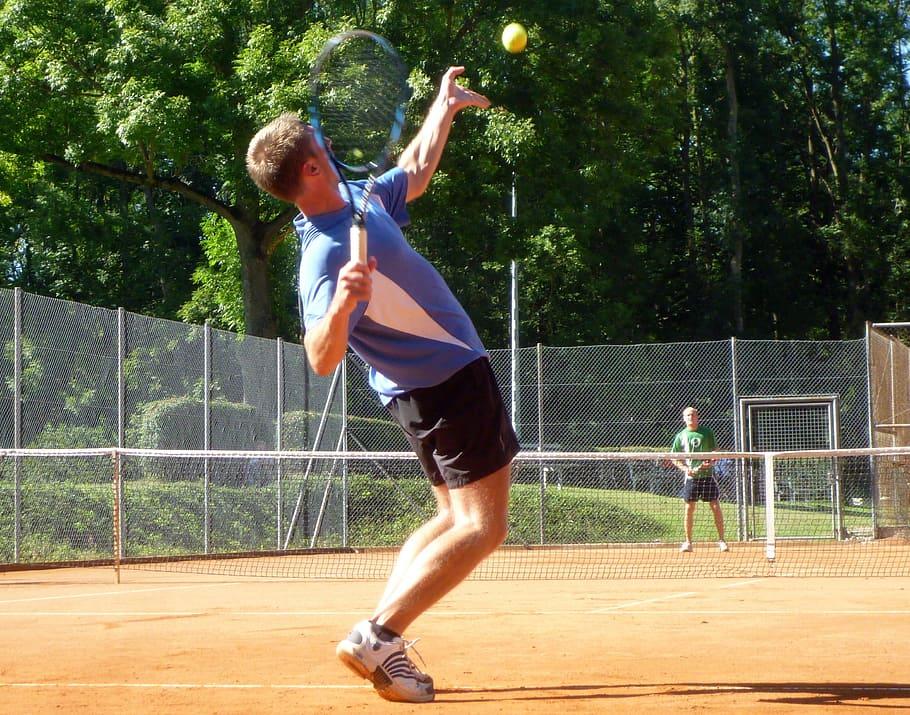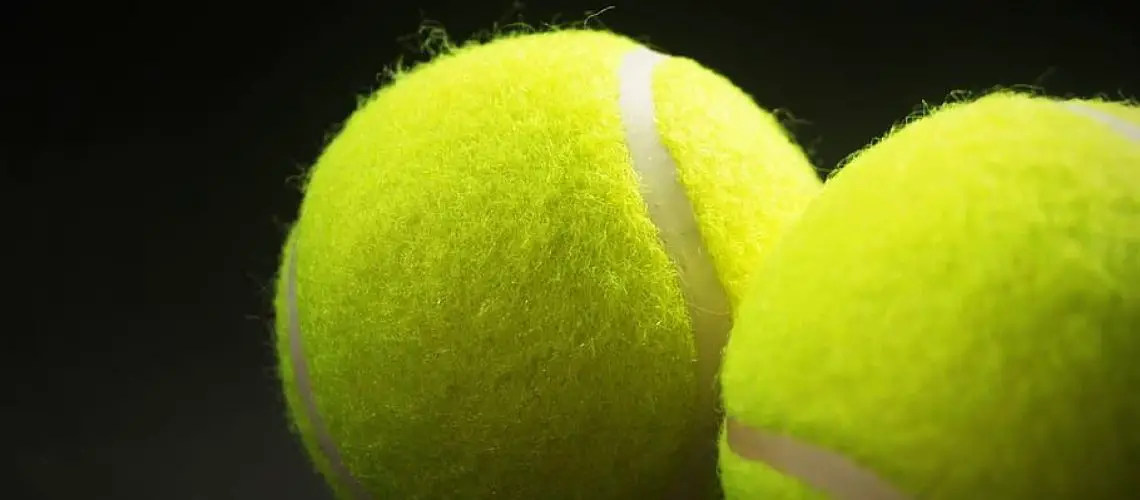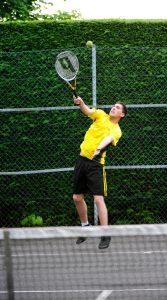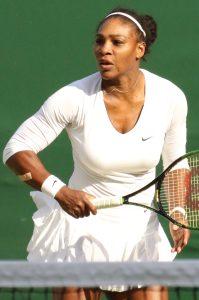We may earn money or products from the companies mentioned in this post.
Introduction to serving a tennis ball

Serving is a fundamental aspect of tennis and plays a crucial role in determining the outcome of a match A well-executed serve can put your opponent on the defensive right from the start, giving you an advantage in the game It is often said that “you’re only as good as your serve,” highlighting the significance of this shot in tennis
Importance of a good serve in tennis
The serve is not just about getting the ball into play; it’s an opportunity to take control and dictate the pace of the game A powerful and accurate serve can earn you free points, while a weak or inconsistent one can give your opponent an easy advantage Additionally, a strong serve puts pressure on your opponent, making it harder for them to return effectively
Types of serves
1 Flat serve
The flat serve is one of the most commonly used serves in tennis, known for its speed and power It involves hitting the ball with minimal spin, resulting in a straight trajectory over the net This type of serve is effective for players who rely on their strength to generate pace and surprise their opponents with its speed
2 Slice serve
The slice serve adds spin to the ball, causing it to curve sideways after crossing the net This type of serve can be particularly useful when aiming for wide angles or when trying to move your opponent out of position The slice creates an unpredictable bounce, making it challenging for opponents to return with accuracy
3 Kick serve
The kick serve combines topspin and slice to create an arching trajectory over the net followed by a high bounce upon landing in your opponent’s court This type of server can be difficult to return as the ball jumps up and away from the receiver, often forcing them to hit the ball above their shoulder level The kick serve is a great weapon for players looking to disrupt their opponent’s rhythm
Proper techniques for serving a tennis ball
When it comes to serving in tennis, mastering the proper techniques is essential for a powerful and accurate shot Let’s dive into the key elements that can take your serve to the next level
Stance and positioning on the court
Before you even start your serve, it’s crucial to get your stance and positioning right Depending on whether you’re in the deuce court or ad court, your starting position will vary slightly In the deuce court, stand with your left foot forward (for right-handed players) and vice versa for the ad court This allows for better body alignment and balance during the serve
Furthermore, pay attention to your feet placement and body alignment Keep your feet shoulder-width apart and parallel to each other Aligning yourself properly on the baseline will give you a solid foundation for generating power in your serve
The grip and racquet handling
The grip you use when serving can greatly impact your ability to control the ball’s direction and generate power There are different grips commonly used for serving: Eastern, Continental, and Western grips
The Eastern grip is versatile and widely used by many players as it offers good control while still allowing some spin on the ball The Continental grip is often preferred by advanced players due to its versatility in generating different types of serves, including slice serves and kick serves Lastly, the Western grip is suitable for players who want maximum topspin but may sacrifice some control
In addition to choosing an appropriate grip, pay attention to racquet angle and position during the serve Aim to keep the racquet head slightly tilted back at around a 45-degree angle when starting your motion
Steps to executing a successful serve
Now, let’s break down the steps for executing a successful serve
Ball toss:
The ball toss is crucial as it sets up the entire serve Toss the ball to a consistent height slightly in front and above your hitting shoulder The direction of the toss should be straight up, ensuring you have enough time to prepare for the swing
The backswing:
As you start your swing, focus on the racquet drop, shoulder rotation, and elbow position The racquet should drop naturally behind you while your shoulders rotate to generate power Keep your elbow at a comfortable angle, neither too bent nor too straight
The contact point:
The optimal hitting zone is slightly in front of your body and around waist height Make sure to make contact with the ball at this point while utilizing proper wrist snap for added power and spin
Follow-through and landing:
After making contact with the ball, follow through with your swing by extending your arm fully Transfer your weight from back to front foot for maximum power while maintaining balance throughout the shot
Mastering these techniques will not only enhance your serving abilities but also give you an advantage on the tennis court Practice regularly and pay attention to each element mentioned above to become a formidable server in no time!
Common Serving Mistakes and How to Correct Them
Serving is a crucial aspect of any tennis player’s game A powerful and accurate serve can give you a significant advantage over your opponents However, there are several common serving mistakes that players often make, which can hinder their performance on the court In this article, we will explore these mistakes and provide valuable tips on how to correct them
Double Faults and Their Causes
Double faults occur when a player fails to get their serve into play, resulting in the loss of a point It is frustrating for any tennis player to commit this mistake repeatedly during a match The causes of double faults can vary from technical errors to mental pressure
To overcome double faults, it is essential to focus on your technique Pay attention to your ball toss and ensure it is consistent and at the right height for your preferred serving style Additionally, practice maintaining a relaxed grip on the racket handle and execute a smooth motion during your serve
Inconsistent Ball Tosses
An inconsistent ball toss can greatly affect the accuracy and power of your serve If your ball toss varies in height or placement, it becomes challenging to time your swing correctly, leading to errors in execution
To improve consistency in your ball toss, practice tossing the ball consistently at the desired height and position before each serve Focus on keeping the toss slightly in front of you rather than directly above your head for better control Additionally, pay attention to where you release the ball from your hand, as this can greatly impact its trajectory
Poor Footwork Leading to Foot Faults or Loss of Power
Footwork plays a crucial role in generating power and maintaining balance during a serve Poor footwork can result in foot faults, where your foot touches or crosses over the baseline before striking the ball It can also lead to a loss of power and accuracy
To avoid foot faults and improve your overall serve, focus on maintaining a proper stance and positioning Position your feet shoulder-width apart and align them parallel to the baseline Practice taking small steps forward as you initiate your serve, ensuring that your back foot remains grounded until you strike the ball
Lack of Variation in Serves Making It Predictable for Opponents
Serving with predictable patterns can make it easier for opponents to anticipate and return your shots effectively Lacking variation in serves often results in losing points or failing to gain an advantage
To add variety to your serves, experiment with different spins, speeds, and placements Incorporate slice serves, kick serves, or flat serves into your repertoire to keep your opponents guessing Additionally, consider changing up the placement of your serves by targeting different areas of the service box
By addressing these common serving mistakes and implementing the suggested corrections, you can significantly enhance your serving prowess on the tennis court Remember that consistent practice and attention to detail are key in refining your technique and becoming a more formidable opponent
Tips for improving your overall service game

When it comes to tennis, having a strong and consistent serve is essential for success on the court Whether you’re a beginner or an experienced player, there are several tips and strategies you can employ to enhance your service game Here are some key areas to focus on:
Practice routines and drills for better consistency
Consistency is crucial when it comes to serving in tennis To improve this aspect of your game, it’s important to establish practice routines and drills that specifically target your serve By dedicating regular time to work on your technique, you can develop muscle memory and refine your skills
Consider incorporating exercises such as shadow serves or ball toss drills into your practice sessions These activities help build muscle coordination and reinforce proper mechanics Additionally, practicing with targets or aiming for specific areas of the court can improve your accuracy and control
Adjusting your serve based on different court surfaces (grass, clay or hard)
The surface you’re playing on can greatly impact the effectiveness of your serve Each type of court surface – whether it’s grass, clay, or hard – requires a slightly different approach in terms of technique and strategy
For example, on grass courts where the ball tends to skid faster, focusing on a flatter serve with less spin may be more effective On clay courts where the ball bounces higher and slower, incorporating topspin into your serves can help maximize control
Adapting your serve to suit the specific characteristics of each court surface will give you an advantage over opponents who fail to adjust their strategy accordingly
Strategies for targeting opponent’s weaknesses with your serves
Your service game offers an excellent opportunity to exploit an opponent’s weaknesses and gain the upper hand in a match By strategically targeting specific areas or exploiting their vulnerabilities, you can put pressure on your opponents and gain an advantage
Take time to observe your opponent during warm-ups or early in the match to identify any weaknesses in their return game If they struggle with high balls, consider incorporating more kick serves into your arsenal Alternatively, if they struggle with low shots, try mixing in some slice serves to keep them off balance
Remember, your serve is not just about getting the ball in play but also about strategically placing it where it will be most challenging for your opponent to return effectively
Mental strategies for staying focused under pressure while serving
Serving under pressure can be mentally challenging, especially during important points or tight matches To maintain focus and composure during these crucial moments, it’s essential to employ mental strategies that help you stay calm and confident
One effective technique is to develop a pre-serve routine that helps center your mind and establish a sense of rhythm This routine could involve taking deep breaths, visualizing successful serves, or repeating positive affirmations to boost confidence
Additionally, learning how to let go of missed serves or mistakes quickly can prevent them from negatively impacting subsequent shots Stay present-focused and trust in your training and abilities
By honing both your physical skills and mental resilience when serving, you’ll be better equipped to handle pressure situations and deliver powerful serves when it matters most
Useful Links
How to Hit a Kick Serve in 5 Steps
4 helpful keys for a perfect ball toss. No more frustration.
3 Steps to Improve Your Tennis Serve
How to Serve In Tennis? Master Your Skills With These 5 …
Tennis Serve Rules | The 5-Minute Guide
How To Serve In Tennis
Rules of Tennis | Wanless Park Tennis
The Basics On How To Serve A Tennis Ball Video
How to Serve a Tennis Ball
The tennis serve toss | By Tennis.Haus – Facebook – Facebook
The Tennis Ball Toss: Breaking Down this Critical Aspect …
Tennis Serving Tips: Stop Hitting The Net
Tennis Technique: how to serve faster
3 Types of Tennis Serves: Flat, Slice, and Kick Instruction
Tennis Serving Rules | USTA
Tennis Serving Tips: How to Toss the Ball – Pro Tips
You’ve Been Served
Tennis Serve Technique & Fundamentals Guide






